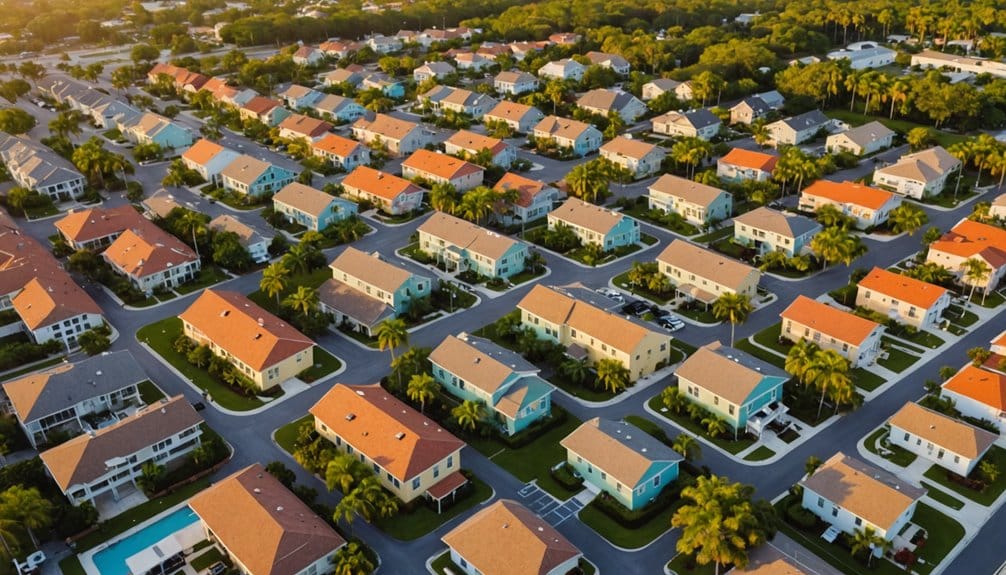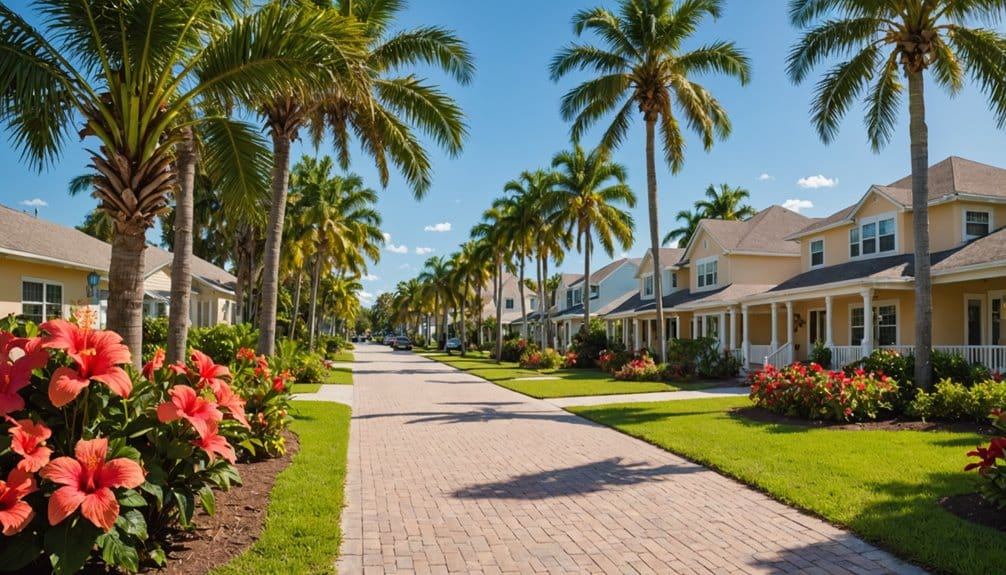The real estate market is constantly changing, and right now, Florida is seeing a shift. Some people may find incredible opportunities, while others might feel disappointed if they don’t plan carefully. Market shifts have happened before, and history shows that both buyers and sellers can succeed when they understand the trends. So, is it time to buy in Florida? The answer depends on your goals, timing, and how well you navigate the market.
Right now, inventory is rising, which means buyers have more options and negotiating power. Home prices are stabilizing, and while mortgage rates are still higher than in past years, experts predict they will gradually decline. Florida’s strong job market continues to drive housing demand, but affordability remains a challenge for some. If you’re prepared to do your research and work with an experienced realtor, you can find great deals that may not have been available during the peak of the seller’s market.
Looking back, Florida’s real estate market has seen ups and downs, yet it has consistently grown over time. Whether prices rise or fall in the short term, long-term trends remain positive. If you’re thinking about buying, understanding these shifts can help you make the right move at the right time. With careful planning, research, and expert guidance, it may just be the perfect time to buy in Florida.
Essential Key Takeaways for Navigating the Florida Real Estate Market
- Florida’s housing market is shifting towards a buyer’s market, with increased inventory and lower home prices creating more negotiation opportunities.
- Mortgage rates in Florida are currently lower than the national average, making it a favorable time for buyers to secure loans.
- Home prices are projected to stabilize, with potential increases expected, making now a good time to enter the market before prices rise further.
- Economic growth forecasts and stable unemployment rates indicate a strong labor market, supporting long-term housing demand and investment.
- While affordability challenges persist, the increase in housing supply and potential future rate declines suggest a favorable buying environment.
Current Housing Market Overview in Florida
What factors contribute to the current housing market dynamics in Florida? The state’s housing markets are experiencing remarkable growth, with nine metro areas expected to be among the top 100 U.S. markets by 2025. In South Florida, home sales are anticipated to rise by 24%, while prices will increase by 9%.
Inventory levels have surged by 40.1%, with single-family homes and condos contributing considerably. Notably, areas like Palm Beach, Tampa-Sarasota, Miami-Fort Lauderdale, and Orlando-Kissimmee-Sanford rank among the hottest markets. Factors such as favorable mortgage rates, an uptick in new constructions, and potential political influences further shape this landscape.
As the median home price hovers around $410,900, market conditions indicate a complex but promising environment for prospective buyers. Additionally, the expected annual sales tally for homes in the U.S. is projected to reach 4.07 million by 2025, further reflecting the positive trends within the market. The shift towards remote work flexibility has also increased demand for larger homes with dedicated office spaces.
Understanding the Shift to a Buyer’s Market
Recent data indicates a notable shift towards a buyer’s market in Florida, characterized by increased housing inventory and lower home prices. With a rise in available properties, buyers can now investigate options with less urgency, allowing for negotiations and potential concessions. Furthermore, favorable mortgage rates may further incentivize purchasing, making this an opportune moment for prospective buyers.
Additionally, the current market overview highlights that Florida home values have increased by approximately 80% over the past five years, emphasizing the potential for long-term growth in the real estate market. Understanding the importance of mortgage preapproval can also enhance a buyer’s position in this favorable market.
Increased Housing Inventory
As the housing market in Florida continues to evolve, the increase in housing inventory signals a notable shift toward the buyer’s market. By the end of 2024, active listings rose to 98,429, marking a 27% increase from the previous year. The months’ supply of inventory increased to 4.7 months, suggesting a more balanced market.
New listings surged by 40.1%, with single-family homes and condos seeing notable increases of 15.2% and 13.8%, respectively. Despite a median home price of $410,900, the increasing inventory indicates potential for price stabilization, as homes now spend an average of 70 days on the market. This growing availability improves opportunities for buyers seeking to establish roots in Florida’s diverse communities. Additionally, the increased inventory provides buyers with more options, reducing urgency in bidding.
Lower Home Prices
Lower home prices in Florida reflect a significant shift toward thebuyer’s market, influenced by different economic factors. Raised mortgage rates, currently between 6.50% and 6.84%, along with increased homeowners insurance, have strained buyer affordability. A market correction is underway, with home prices expected to decline gradually.
The supply of single-family homes has surged by 15.2% and condos by 13.8%, contributing to a more balanced environment. Additionally, homes are spending longer on the market, averaging 63 to 83 days, indicating waning demand. With reports of price drops becoming more common, prospective buyers may find favorable conditions to negotiate. This evolving landscape invites buyers to investigate opportunities while remaining mindful of the changing economic backdrop. Furthermore, the active inventory of single-family homes decreased by 4.5% to 6,883 properties, highlighting the ongoing challenges in the market.
Favorable Mortgage Rates
How do current mortgage rates influence the dynamics of Florida’s housing market? The average mortgage rate in Florida is 6.56%, significantly lower than the national average of 7.004%. This disparity can influence buyer sentiment and purchasing power, particularly in a market characterized by rising inventory levels. As mortgage rates fluctuate, understanding their impact on affordability remains essential for potential buyers. Rates updated daily provide valuable insights into the best times to enter the market.
| Loan Type | Average Rate (%) |
|---|---|
| Conforming Loans | 6.50 |
| Government Loans | 6.25 |
| Jumbo Loans | 6.75 |
Elevated property insurance rates further complicate the decision to buy, signaling a need for potential buyers to remain informed about both mortgage rates and local market conditions.
The Impact of Increased Housing Inventory
The increase in housing inventory in Florida has shifted the market dynamics, providing buyers with improved negotiation power. With a significant rise in available homes, buyers can approach transactions with a more substantial advantage, potentially securing better prices and terms. This influx of inventory is also contributing to price stabilization, as evidenced by a decrease in home sales and a growing number of properties spending more time on the market. Notably, the overall supply levels are at their highest in a decade across Florida. As a result, understanding local realtor benefits can further enhance buyers’ positions in this evolving market.
Buyer Negotiation Power
As buyers navigate the current Florida housing market, they may wonder how the significant increase in housing inventory is reshaping their negotiation power. The rise in available homes provides buyers with more options, reducing the urgency to engage in bidding wars. This shift has led to longer selling times and increased seller flexibility regarding pricing and incentives. Additionally, the inventory recovery is expected to continue, further enhancing buyer choices.
| Factor | Impact on Negotiation Power |
|---|---|
| Rising inventory | More options for buyers |
| Longer selling times | The increased advantage for negotiation |
| Seller incentives | Improved buyer benefits |
| Reduced competition | Less urgency to act |
| Strategic pricing by sellers | More room for negotiation |
In this evolving landscape, buyers are better positioned to make informed decisions and secure favorable terms.
Price Stabilization Effects
With the recent surge in housing inventory across Florida, the dynamics of the housing market are undergoing significant transformations that are leading to price stabilization effects. Active listings reached 98,429 at the end of 2024, a 27% increase from the previous year, contributing to supply of 4.7 months. This increase typically slows price growth, with modest declines likely as buyers face less urgency in bidding.
Importantly, regions like Ocala have seen substantial inventory rises, indicating a softening market. As demand drops and investor activity wanes, a more balanced environment emerges, favoring buyers. With mortgage rates expected to improve in 2025, early action may enable potential homeowners to capitalize on expanding options before increased competition returns.
Analyzing Median Home Prices and Trends

How are median home prices shaping the Florida housing market as it approaches 2025? Current trends indicate a complex landscape. Although median home prices in Florida have slightly decreased, the market is projected to stabilize and appreciate gradually by 2026. Key factors influencing this include:
- Projected growth in Miami-Fort Lauderdale and Orlando-Kissimmee, with significant sales and price increases.
- Increasing inventory levels will provide more options for buyers, especially in spring and summer.
- Demographic trends, including ongoing population growth, support housing demand.
- Market fluctuations, with anticipated temporary price declines followed by sustainable annual appreciation rates of 3% to 5%.
These dynamics suggest a buyer-friendly environment, especially for those seeking to enter the market. Additionally, the influence of boomer demographics is expected to shape housing supply and demand patterns in the coming years.
Mortgage Rates: What to Expect in 2025
Mortgage rates in 2025 are projected to remain high but may experience a gradual decline, potentially reaching around 6% by mid-year. This decrease could improve buyer demand, especially among millennials keen to enter the housing market. As affordability challenges persist, the combination of lower rates and increased inventory may create a more favorable environment for home purchases. Additionally, obtaining preapproval can significantly enhance a buyer’s position in a competitive market, allowing them to act quickly as opportunities arise.
Predicted Rate Decline
What factors might contribute to the anticipated decline in mortgage rates by 2025? Key economic indicators suggest a decrease in mortgage rates, expected to range between 6.0% and 6.35% by year-end. The projected decline is influenced by several factors, including:
- Lower Federal Funds rate
- Narrowing mortgage rate spread
- Gradual economic stabilization
- Increased competition among lenders
Experts foresee a steady reduction in rates throughout 2025, with monthly forecasts indicating rates as low as 5.66% by April. This trend signals a more manageable home financing environment, potentially benefiting both current and prospective homeowners. As rates decline, the housing market may become more accessible, fostering a sense of community and belonging among buyers in Florida.
Buyer Benefits Ahead
A notable shift in the housing market is anticipated as buyers prepare for the evolving landscape of mortgage rates in 2025. Stabilizing rates are expected to improve affordability, particularly for novice buyers. This stabilization, influenced by economic conditions and local market dynamics, could encourage more buyers to enter the market despite current challenges.
| Market Factor | Current Impact | Future Expectation |
|---|---|---|
| Mortgage Rate Trends | Raised yet stabilizing | Further stabilization |
| Buyer Affordability | High prices challenge | Enhanced with lower rates |
| Local Market Dynamics | Influences rates | Continued demand growth |
As buyers assess job stability and financial readiness, these evolving conditions may provide an exceptional opportunity for homeownership in Florida.
Regional Variations in Housing Demand

How do regional dynamics shape the housing demand across Florida? The state’s housing market is characterized by significant regional variations influenced by economic factors and buyer preferences. Key insights include:
- Miami and Fort Lauderdale are expected to see growth driven by diverse buyers.
- Orlando’s focus on affordable new constructions positions it favorably for 2025.
- Jacksonville has experienced a cooling market, with a notable decline in home sales.
- Inventory has increased statewide by 40.1%, providing more options for potential buyers.
Additionally, understanding local housing markets can play a crucial role in navigating these regional dynamics effectively.
These dynamics reflect how local economies and demographics can dramatically affect housing demand, highlighting the need for prospective buyers to reflect on specific regional trends when evaluating their options in Florida’s complex market.
The Appeal of Florida’s Housing Market
While the Florida housing market faces fluctuations, its general appeal remains robust due to a combination of stabilizing home prices, increased inventory, and strong demographic trends. Home prices have leveled off, with a modest increase to a median of $383,000, allowing buyers to enter the market without overextending financially. The inventory has surged by 27.8% year-over-year, providing more excellent choices and enhancing negotiating power for potential homeowners. In addition, Florida’s ongoing population growth, fueled by migration and lifestyle desirability, continues to support housing demand.
With a balanced market and economic resilience, the state’s housing landscape presents opportunities for both buyers and investors, making it an attractive option for those seeking a sense of belonging in a vibrant community. Additionally, understanding financial capacity and mortgage options is crucial for navigating the buying process effectively.
Economic Fundamentals Supporting Home Buying

Economic stability serves as a cornerstone for home buying in Florida, specifically as indicators suggest a positive trajectory for the state’s economy. Key economic fundamentals support an optimistic outlook for potential homeowners:
- Projected GDP growth of 2.5% to 3.0% in 2025, exceeding national averages.
- Job growth is anticipated at 1.00% to 1.25%, aligning with pre-pandemic rates.
- Unemployment rates are stable between 3.6% and 3.8%, reflecting a strong labor market.
- Population growth is expected to reach 23.75 million residents, bolstering housing demand.
These factors create an environment where home buying becomes increasingly attractive despite existing affordability challenges. As the state adapts and innovates, the long-term economic forecast remains promising, encouraging a sense of belonging for new residents. Moreover, the rapid population growth in areas like Westlake highlights the increasing demand for housing in Florida’s expanding communities.
Challenges Facing Potential Homebuyers
As affordability challenges mount, potential homebuyers in Florida face a complex landscape characterized by rising costs and stagnant wages. With a Purchase Applications Payment Index of 209.9, Florida ranks among the least affordable states for homebuyers. The mortgage payment-to-income ratio has surged to 40%, with total annual costs often exceeding $30,000.
Furthermore, soaring homeowners insurance premiums can equal or surpass monthly mortgage payments. Declining home sales, down 40% from pandemic highs, coupled with stagnant wage growth, exacerbate the affordability crisis. Approximately 2.4 million families in Florida are cost-burdened, spending more than 30% of their income on housing.
These factors collectively hinder many persons’ aspirations of homeownership, highlighting the pressing need for practical solutions. Additionally, median home prices in Palmetto are significantly lower than the national average, providing a potential opportunity for budget-conscious buyers.
Future Predictions for Florida’s Real Estate Market

Given the current economic landscape, predictions for Florida’s genuine estate market suggest a gradual recovery amidst ongoing challenges. Key forecasts indicate that while home prices may rise modestly, assorted factors will shape the market’s trajectory:
- Median Home Price: Expected to reach $420,000 by 2025, a 3.6% increase.
- Rent Prices: Projected to climb to around $2,100 per month, a 2% rise.
- Interest Rates: Anticipated drop to approximately 6.3% by late 2024.
- New Construction: An increase in building permits signals an uptick in housing supply. Additionally, strong job market conditions in Florida can further positively influence housing demand and property values.
Frequently Asked Questions
Is Now the Right Time to Buy in Florida for Long-Term Stability?
With the market shifting, buyers have more options and negotiating power, making it a great time to buy in Florida. While short-term fluctuations exist, long-term trends point to continued growth, making homeownership a solid investment.
What Neighborhoods in Florida Offer the Best Investment Opportunities?
Florida neighborhoods like Miami, Orlando, Palme Beach, Sarasota, and Tampa areas present substantial investment opportunities. Factors include growing markets, increased new construction, and favorable rental conditions, making them appealing for both short-term and long-term investment strategies.
How Can First-Time Buyers Navigate Florida’s Real Estate Market?
Initial-time buyers can navigate Florida’s genuine estate market by leveraging increased inventory, understanding local trends, securing preapproval, negotiating concessions, and seeking professional guidance to make informed decisions amidst fluctuating conditions and varying regional dynamics.
Are There Specific Buyer Incentives Available in Florida?
Florida offers numerous buyer incentives, including the Hometown Heroes Housing Program and other state and local assistance programs. These initiatives help first-time buyers with down payments, closing costs, and overall affordability.
What Are Typical Closing Costs for Buying a Home in Florida?
Ironically, while homebuyers focus on dream homes, typical closing costs in Florida range from 2% to 3% of the purchase price, encompassing diverse fees such as appraisals, inspections, and insurance, ultimately adding significant expenses.
How Does FFlorida’sProperty Tax System Affect Homebuyers?
Florida’s property tax system greatly influences homebuyers by determining costs through assessed values and exemptions. The homestead exemption reduces tax liabilities while rising property values and taxes impact affordability and long-term financial planning for prospective homeowners.
Conclusion
The market is changing, and many are wondering if now is the time to buy in Florida. With more homes available and prices stabilizing, buyers have a better chance to find the right home at the right price. While mortgage rates are still higher than in past years, they are expected to decline, making homeownership more affordable in the future. The strong job market also supports long-term growth, which is good news for buyers.
Of course, no market is perfect. Some challenges, like affordability and competition in popular areas, still exist. However, history shows that Florida real estate remains a substantial investment over time. If you’re ready to do your research and work with an experienced realtor, this could be the perfect time to buy in Florida and secure a home that fits your needs and budget.





0 Comments